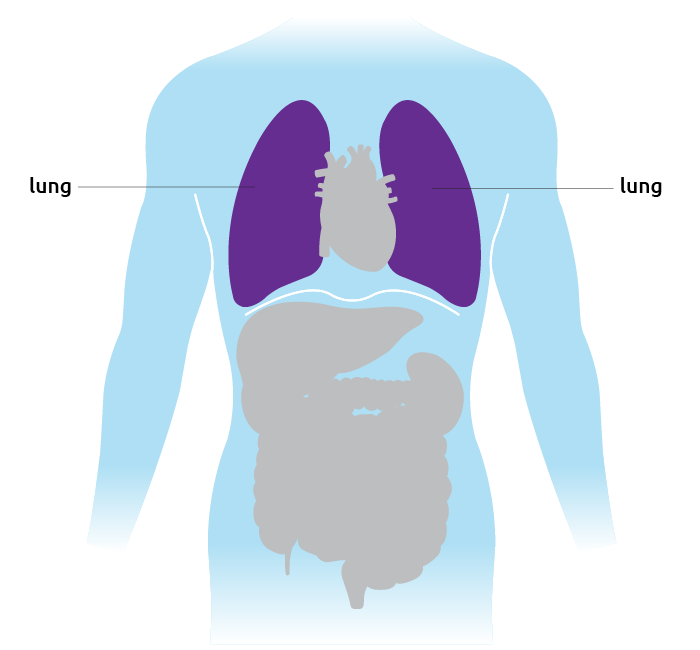Lung
The lungs are a pair of highly elastic and spongy organs in the chest. They are the main organs involved in breathing.
How do your lungs work?
When you breathe, you transport oxygen to the body’s cells to keep them working and clear your system of the carbon dioxide that this work generates. The lungs take in air from the atmosphere and provide a place for oxygen to enter the blood and for carbon dioxide to leave the blood. The lungs are divided into sections, with three on the right and two on the left.
Common lung diseases
Common diseases that may lead to transplantation include:
About a lung transplant operation

Preparing for the hospital
Preparing for the hospital In advance of your lung transplant surgery, use the following checklist ahead of your procedure:
- Select your primary support person. Choose someone you feel close to who has the time, health, and flexibility to be your caregiver. You need to know you are not a burden to this person. For caregivers, follow this link for more information on caring for patients.
- Prepare a phone/email tree. This will make it easier for your caregiver to update friends and family while cutting down on phone or email volume.
- Organize your personal affairs. Consider filling out an advanced directive, writing a will, and sharing access to bank accounts, e-mail, or blogs with a trusted loved one. You may also need to fill out Family Medical Leave Act, insurance, or loan deferment paperwork.
- Consider dependent care. Find someone you trust and set up a plan to take care of your children and/or pets. Ask your doctor when you can expect to see your children and pets after your transplant.
- Arrange transportation. You will want to plan how to get to the transplant center quickly when you get the call that an organ is available. Be sure to make these arrangements well in advance. If you are relocating, make sure you make housing arrangements in advance.
- Pack your bags. You’ll need to be ready to leave as soon as you get the call that an organ is available. Include insurance information, a list of medications, an extra 24-hour supply of medication, and other necessities.

The procedure
After the donor lungs are removed, preserved and packed for transport, they must be transplanted into the recipient(s) within five to six hours. The recipient receives general anesthesia and is placed on a ventilator and bypass machine to oxygenate the blood while the transplant is being performed. The recipient’s diseased lung(s) are then removed from the main blood vessel attachments to the heart and bronchus so the new lung(s) can be put in place. Following the completion of all connections, chest tubes are also inserted for drainage, which allows the lungs to function. Because the length of this surgery is different for every patient, families should talk with the surgeon about what to expect.

During recovery
Postoperative care begins with a team of health professionals within the hospital. Careful, comprehensive post-surgical monitoring constantly evaluates whether the body is accepting the new organ. In addition, the amount of time you spend in the recovery room, waking up and getting to the point that you’re ready to go home, will vary from patient to patient. Because individual experience after recovery is so unique, it is important to discuss with your physician what to expect after surgery.
Reference and Publication Information
This Web site is intended solely for the purpose of electronically providing the public with general health-related information and convenient access to the data resources. UNOS is not affiliated with any one product nor does UNOS assume responsibility for any error, omissions or other discrepancies.


